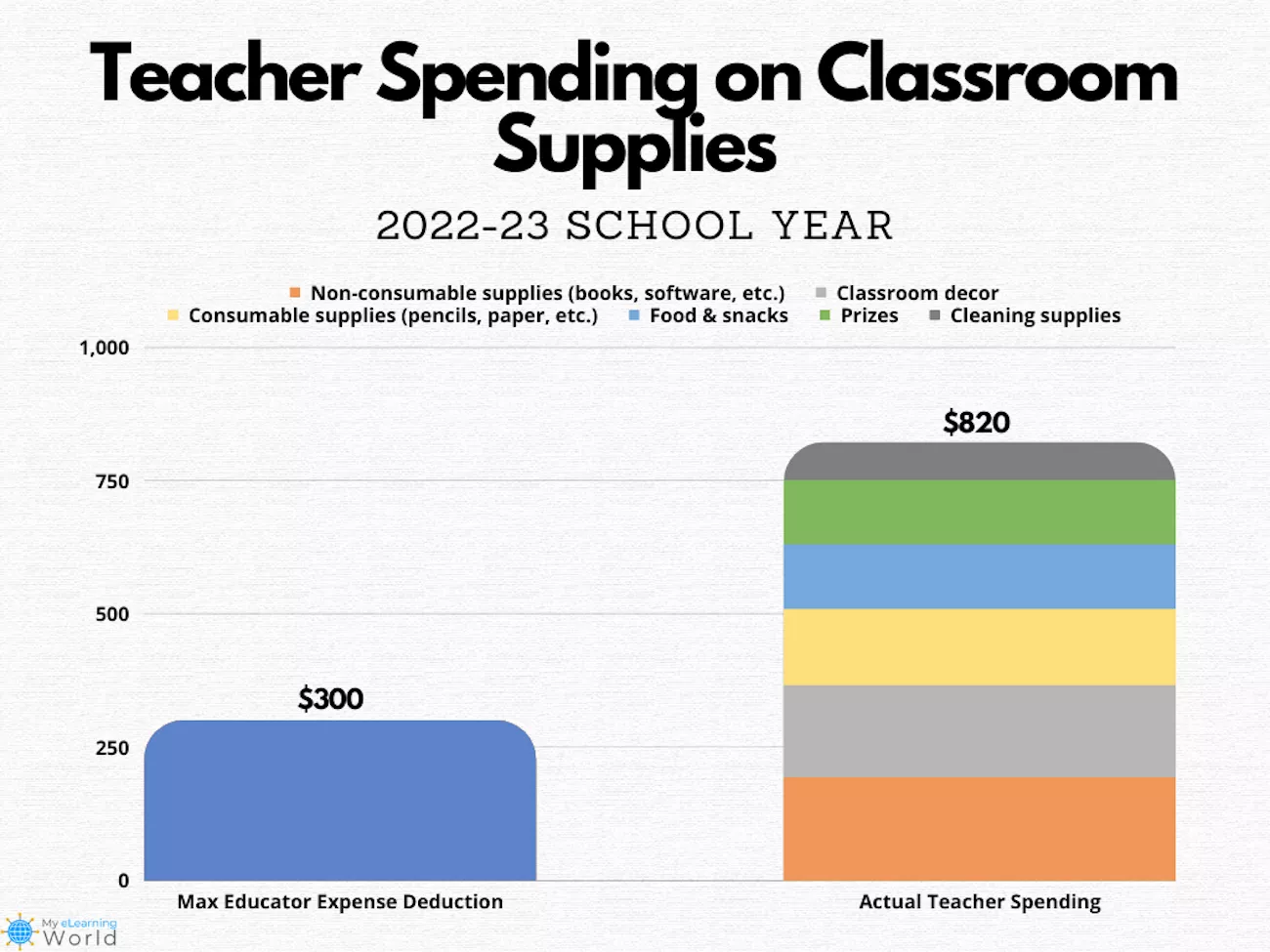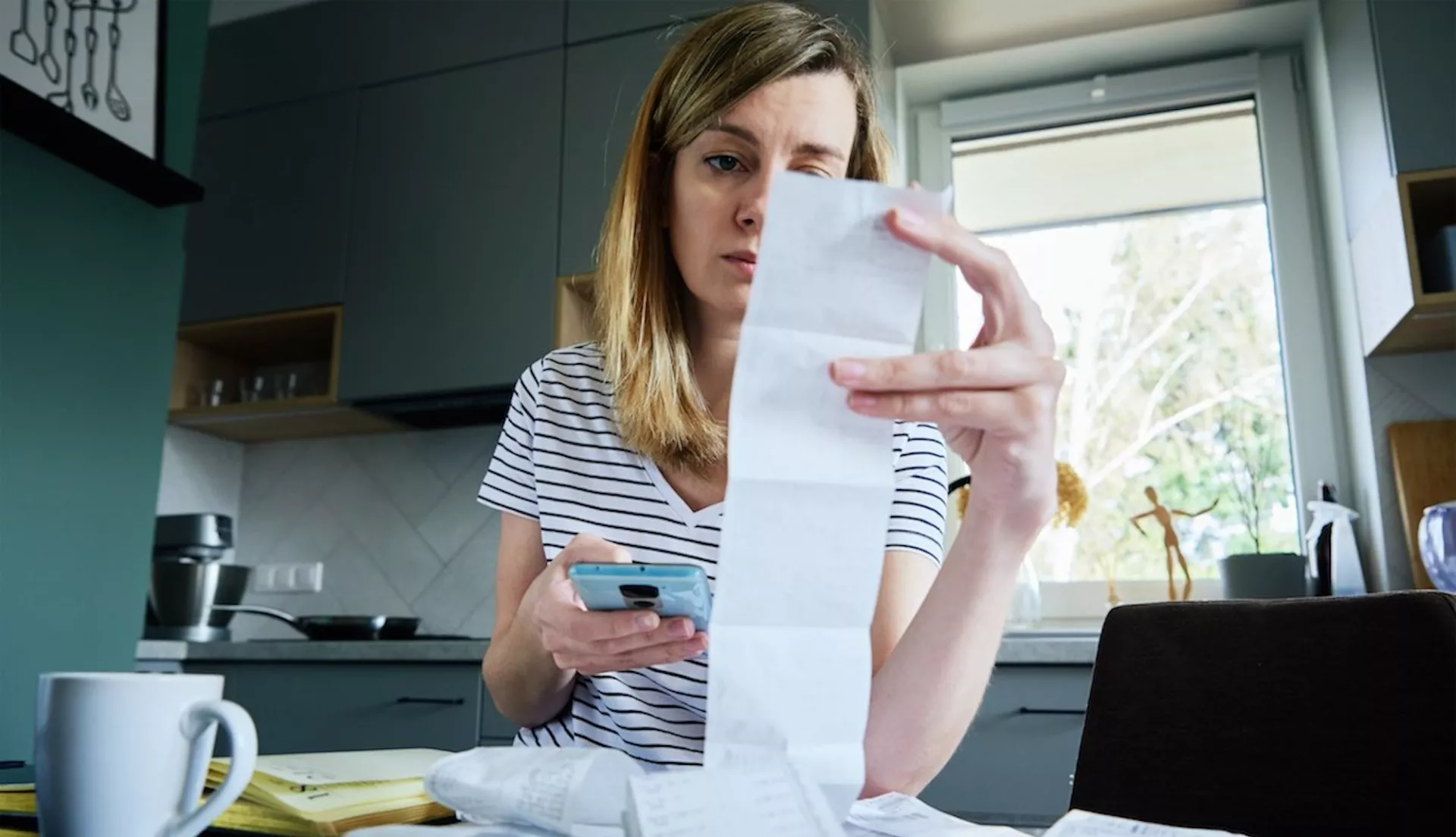Key Takeaways
- Well over 90 percent of teachers spend their own money on school supplies and other items their students need to succeed.
- Just before the pandemic, educators on average spent around $500 of their own money on classroom supplies over the course of the year. That number is expected to be considerably higher this year.
- Under resourced schools and the unstated expectation that educators will spend their own money on supplies and equipment are factors that drive educators away from the profession.
Many educators are seeing heftier credit card bills this month. That’s because educator out-of-pocket spending on school supplies is most concentrated as they are setting up their classrooms at the beginning of the academic year.
When NEA Today asked educators to tell us what they had spent money on so far this year, they had a lot to say: Paper and notebooks, binders and clipboards, crayons and pencils, dry erase markers, glue sticks, and organizing bins came up a lot. Some said they have to purchase their own soap and hand sanitizer to supplement what is provided by the district.
Well over 90 percent of teachers spend their own money on school supplies and other items their students need to succeed. Just before the pandemic, educators on average spent around $500 of their own money on classroom supplies over the course of the year, as the New York Times reported. Despite the offset of a modest tax deduction, having to pay for their own supplies adds to educator fatigue and worsens their own economic picture.
But the bulk of educator out-of-pocket spending hardly seems optional.
Too many classrooms wouldn’t have a library if they didn’t buy the books and shelves themselves. Michigan teacher Liz Jorgensen has spent hundreds of dollars already, adding to her self-funded classroom library. “It’s worth it to have focused, engaged students during independent reading time rather than off-task students due to the fact that they don’t like their book.”
Some teachers purchase subscriptions to online reading and science programs that their students can access all year. Others need lab equipment and other materials for hands-on lessons that help keep students engaged.
Spending on the Rise
All of this spending by teachers and support professionals quickly adds up.
One analysis estimates that this academic year, educators will spend more than $820 out-of-pocket on school supplies.
Colorado art teacher Rozx Gallegos says she’s already spent “$300 this year on organizing bins, new brushes, canvas boards…..and the year is young. I’ll spend another chunk before end of year.” Incredibly, one year, she even refinanced her house to purchase technology for her classroom.

In high-needs districts, educator spending routinely goes beyond classroom supplies. Some teachers have to purchase fans because their classrooms have no air conditioning. High inside temperatures can leave staff and students alike drowsy and distracted. A number of educators mentioned that they spend a lot on snacks because if they don’t, they routinely see students who are too hungry to focus on their schoolwork.
“Snacks are the biggest thing that drain my cash,” said Washington teacher Wendy Van Skyhawk, who works in a district where more than 60 percent of families are low-income. "Sometimes a granola bar provides just enough energy to fuel brains.”
If educator out-of-pocket spending really does reach an average $820 this year, educators nationwide could end up subsidizing schools to the tune of $3 billion.
Unrealistic Expectation
Educators who spend their own money on school supplies feel it’s essential to helping their students learn and feel comfortable in the classroom. But for many educators, that annual spending does take a toll.
Retired teacher Cheryl Park of Michigan says every year she spent between $1,000 and $2,000 on her classroom. That's “about $40,000 over the course of a 25-year career” she noted. Throughout that time, she and her colleagues endured a number of pay cuts.
In a white paper released this month, the National Education Association cited that under resourced schools and the unstated expectation that educators will spend their own money on supplies and equipment are factors that drive educators away from the profession.
Another major factor driving the educator shortage crisis is low pay, which makes the out-of-pocket spending even more outrageous.
The "teacher pay penalty" is the percentage by which public school educators are paid less than comparable workers. According to the Economic Policy Institute, this gap reached an all-time high this year. Teachers on average now earn 23.5 percent less than comparable college graduates.
But educators say they feel compelled to buy essential supplies and make their classrooms welcoming and comfortable for students.
“Here’s the deal,” explained Virginia teacher Janine Vaughn. “My classroom is my home away from home and my students’ too. I want it to be comfy, attractive, and functional. So, I spend my own money to make it that way.”
A Step Forward
This year, educators can deduct up to $300 of qualified out-of-pocket expenses on their taxes. This represents a $50 increase over the deduction allowed between 2002-2021. Classroom supplies and equipment and professional development related to the curriculum in which the educator provides instruction are all qualified expenses.
The educator expense deduction is particularly valuable, because it is claimed “above the line,” meaning it can lower an educator’s adjusted gross income, and it is available to those who itemize deductions as well as those who don’t.
While the increase is a step in the right direction, NEA’s advocacy on the issues of educator pay and protecting the educator expense deduction are ongoing.


